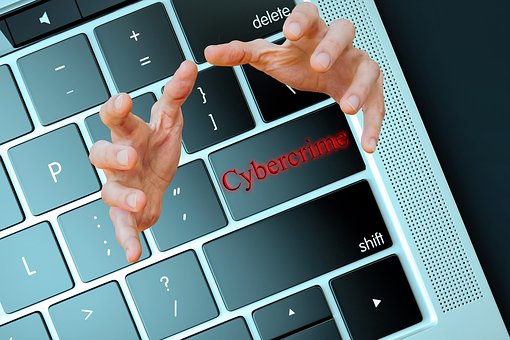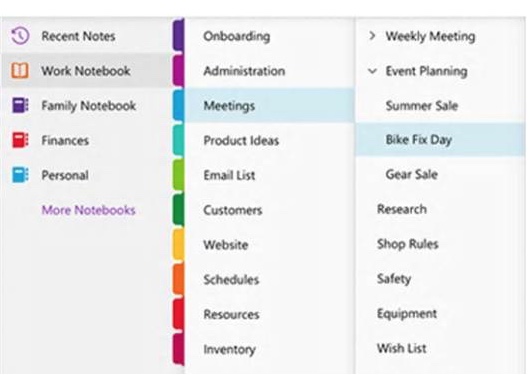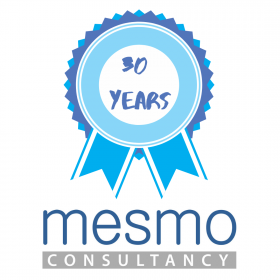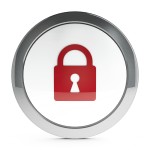
Top tips to improve human resistance to cyber crime, The weakest link in any organisation’s defence to cyber crime is us the users. Here are top tips to for PAs and EAs spot possible vulnerabilities and actions to take to improve your defence to a potential cyber attack. Published in Executive Secretary Magazine June 2019
Tags: Cyber crime reduce risk, Email born cyber crime, Human defence to cyber crime
OneNote – my handbag for work
How often are you (or your boss) weighed down carrying piles of paper from one meeting to the next and then back to the office (or home) to sort through them? What happens when one of the sets of papers changes last minute between meetings? Could having a digital notebook to access all your files and emails in one place help you optimise your working day and work smarter? This is how one EA and her boss changed their way of working to just such a system using OneNote.![]()
Seriously, what is OneNote?
It really is a digital notebook, which gives you the ability to use Microsoft’s full suite of tools, such as Word, PowerPoint, Excel, Teams directly through it.
How can I get my hands on it?
OneNote is licensed as part of Microsoft Office so a lot of companies have it already on their company devices but perhaps some of them may think it’s just a text editor, or a simple version of Word. If you don’t already have Microsoft Office you can easily subscribe to it for either business or personal use by logging onto their website, or speaking to your IT department.
What can I use it for?
It’s a wonderful collaborative tool which used correctly makes life, well, just so much easier. You can use OneNote to take minutes, record video & audio clips, create To Do Lists, embed links and articles from the web, add pictures, add voice notes, drawings, and the list goes on. Most importantly you can share your notebooks and edit documents at the same time with multiple people, and open your notebooks on any other device as long as long as the device has OneNote preinstalled already.
How do I use it?
As an Executive Assistant with over 20 years’ experience, I was fortunate enough to land in the tech savvy, fast-paced Visa, and found myself looking after an extremely busy and very down to earth Chief Of Staff (Claire) within the CEO’s office. I was already using OneNote personally, however I had never explored its professional capabilities until I joined Visa. My lovely colleague (Helen) who supports the CEO (Charlotte) changed my whole way of working when SHE introduced me to her way of using OneNote with the CEO, so I have her to thank for me writing this blog .
How do we use it?
In the CEO office we use OneNote as a virtual “briefcase” or “bag”, and we actually refer to it as the “Daily Bag”, “Reading Bag” or “Meeting Bag”. Every day we use it to transport and store a multitude of documents, questions and information that Charlotte and Claire need to access at any time, any place, anywhere, and all of the information stays secure. The key functions are mobile, secure, virtual.
The first thing we did was to create separate “shared notebooks ” for Charlotte and Claire, and each notebook had a tab called “Daily Bag”. We then created a daily page which was dated, and this is where we would provide a brief narrative of all the important requests, information, questions asked by others, and documents for review which we would extract from their inboxes. Sometimes copies of the documents could be attached to the page for quick reference, and the best thing is that the notebook could be used on the move.
It’s really like having a handbag with all your documents in one place but much easier to find the contents inside!
OneNote is excellent, if you want to share documents, with real time edits, and store different types of files from the Microsoft Office suite of tools, embed links, web pages, videos, audio and pictures, and most of all carry it with you wherever you need to be.
It has helped us to maximise the productivity of the CEO office, optimising our working day and allowing us to work smarter and faster.
 Paula Simpson is EA to the Chief of Staff at Visa
Paula Simpson is EA to the Chief of Staff at Visa
Tags: Digital notebook, Improve productivity, OneNote, Save time, Work smarter
Monica looks back on an impressive 30 years in business – come with us as we take a journey through our history and all we’ve achieved.
1989 what happened that year?
1989 was the year the Berlin Wall fell, the first GPS satellites were launched, Sir Tim Berners-Lee invented the world wide web, ‘The Simpsons’ debuted, Daniel Radcliffe and Taylor Swift were born, and I launched Mesmo Consultancy! Email had been invented by Ray Tomlinson (in 1971) – although like the world wide web, it was just a dot on the horizon because of the lack of user friendly hardware.
My career and work experience has always positioned me as the middle-man between the IT Department and the ‘end user’ trying to help them to learn how to use technology to improve their personal and business performance. This was pre user-friendly computers and software.
In 1993 sponsored by my client PA Consulting, I conducted an in-depth study of one hundred main board executives to establish some models and guidelines on how they could improve the bottom-line of their organisations by using personal computers. This was a time when a PC could easily take up your full airline cabin bag weight allowance. Battery life was about 30 minutes, the Blackberry had just been invented but mobile devices as we know them were still about six years away. Not everyone had access to email and even if they did, they often did not deal with it themselves. Indeed in some organisations you had to be a certain level to have your own email account. The results of the study were the basis of my PhD and my first book ‘Using the PC to Boost Executive Performance’.
In the 1990’s, executives were already complaining about how much email they received and how much time they had to spend trawling through it to find the items of importance.

Mesmo Consultancy’s first computer in 1989
However, many left their PAs to deal with email. So few executives had any idea how much time their staff were actually wasting dealing with the inbox and how it was rapidly overtaking the in-tray as their main focus. While on a contract to a major Government Department, I spent many months trying to explain this to a Permanent Secretary who said this was nonsense. He changed his mind when a train strike left him working at home and he saw the hundreds of trivial emails in his inbox. My life as an email management consultant and the ‘EmailDoctor’ began with a call from his Special Private Secretary (SPS) who said they wanted me in the office at 8.30 the next morning. I was told to ‘solve the problem of email misuse’. The rest is history, three books and hundreds of articles later.
Email Management – what has changed over 20 years?
But what has changed about how we deal with email? I trawled back through nearly twenty years worth of articles specifically on email management which included five years as The Times ‘Crème’ columnist, Director Magazine IT user columnist; Huffington Post; etc. Several key themes can be identified and in particular how to:
Perhaps the last is one of the most interesting. On the one hand you have the up and coming generation of Millenials who are so technology focused that they feel it’s ‘job done’ by hitting send, and are often the most reluctant to walk and talk. Furthermore the shorter the message the better. I agree with this, but short does not always mean unequivocal and especially to a generation of who are not digital natives of which there are still many at the top of the organisation.
Although letters are still written, for many an e-communication (email or text) is now a binding business communication and so the tone and wording is important to convey the correct image of the organisation. A constant plea from senior management is therefore to educate new joiners how to write professional emails which reflect the organisations values and culture.
What new trends have emerged over the last twenty years?
The same themes are still present even now in 2019 with some even more pronounced. For example we now receive on average 121 emails per day compared to 77 in 2003. Those who are digital natives and find technology easy to use, still do not appreciate that for many, despite the suppliers claims, it is not intuitive. This makes finding budgets for email management and email software (eg Outlook) training hard. Even today, less than 50% of Outlook’s time saving features are used by the average user (eg Rules, Quick Parts and Quick Steps).
Interestingly, we think the fax is dead but it is still used and especially in the medical profession! On top of these, six new challenges have emerged relating specifically to email management:
i. Cyber crime
ii. Data protection and GDPR
iii. Social media
iv. Collaborative tools
v. 24x7x365 work ethos
vi. Impact of digital distractions on our cognitive ability
i) Cyber crime was barely given a mention until the late 1980s and then only in passing. Now not a day passes without at least three cyber crime related stories/blog being published.
ii) Data protection was always an issue but organisations were not quite so obsessed about it. Not surprisingly, with the FOI, GDP and continued instances of hacking, most organisations now have a very heightened awareness of the need to be compliant and protect their most valuable asset – data.
iii) Social media wasn’t even born thirty years ago. If you wanted the latest news and gossip, it was garnered from a conversation around the coffee vending machine, photocopier, landline telephone chats or lunch outside the office. The loss of the art of conversation is perhaps one things which greatly saddens me . Especially when you hear of suicides caused by social media bullying.
iv) Collaborative tools are now seen as a way to reduce email overload but it still takes time to read the electronic notice board. If you elect for electronic updates then these of course often arrive by email!
v) 24x7x365 work ethos. Yes we worked just as hard thirty years ago but it was much easier to switch off and leave your work behind you when out of the office or on holiday. Constantly being in communication, is a 21st Century disease which is giving rise to concerns about our well-being and life-work balance. These are words which never existed in the board’s vocabulary until the last decade.
vi) Impact of digital distractions on our cognitive ability. Several studies have now found that constantly being distracted by email (or social media) is significantly reducing our powers of concentration and thinking to that of a three year old child.
Good, bad or indifferent
I have been very privileged to work during the ‘white hot revolution of technology’ to borrow the late Sir Harold Wilson’s words. They have been and will no doubt continue to be exciting times. I love working with young people who tell me about the latest app or hardware device. Such things still excite and amaze me. During my journey over the last thirty years I’ve met some amazing people and made many friends. However, with the exception of the impact of digital distractions on our cognitive ability, most of the problems related to email look just like new wine in old bottles but with fancy labels. For how much longer are we going to be slaves to our inboxes rather than the other way around?
Or have I been in the business so long that mine is a biased cynical view? What is your view about how technology has changed our working lives over the last thirty years (for better or worse)? Let us know on our social media channels!
Tags: 1989, cyber crime, email management, email overload, Emaildoctor, GDPR, Mesmo Consultancy, Ray Tomlinson, Social media, well being
Why is cyber crime so prevalent when most organisations have cast iron technological defences?
Would it suppose you to know that we are the weakest link in the organisation’s defence against cyber crime. Why? Because we are often time poor and speed is of the essence.

Cyber crime the weakest link
We grab a coffee whilst using a mobile device and forget to look around to see who is watching us and listening to us as we key in our passwords. Yes, the professional hacker can detect your key strokes by special listening devices. Maybe we leave our mobile devices open whilst talking to friends. Email is the number one vector for a cyber attack. 75% of all cyber attacks emanate from email. In our haste to clear our bulging inboxes, by accident we open an email which carries malware.
Five top tips to reduce the risk of a cyber attack
Here are ten top tips to help you and your organisation reduce the risk of human error in the fight against cyber crime. It is an extract from Mesmo Consultancy’s new masterclass ‘Human Defence to Cyber Crime’.
In public places
1. Use a pseudo name when ordering food in very public places like coffee bars and fast food shops.
2. Keep all mobile devises either closed or face down when not in use.
3. Have respect for email. Take time when dealing with the inbox no matter how busy you are.
4. Phone senders if you are the slightest bit suspicious about an email: there is a spelling mistake, caps are used etc. Often the sender will not know their account has been hacked until you call.
Password management
5. Change your passwords frequently and at least every three to six months, making sure you either create a strong one or use a password management app.
Need more help?
Would you and your colleagues benefit by going from being the weakest link in the fight against cyber crime to being the most robust and resilient?
Call or email us now for more information about our new masterclass – ‘Human Defence to Cyber Crime’.
Tags: Cyber crime reduce risk, Email born cyber crime, Mesmo Consultancy, Out of Office message cyber crime, Password Management, social media cyber crime

Email overload and aggressive emails from parents is now one of the major drains on teachers productivity.
In this article first published in IE-Today, Dr Seeley provides tips on how to deal with these challenges and provide more time to focus on the real issues of lesson preparation and pastoral care.
Tags: Aggressive emails to teachers, Email or lesson plans, Emails or pastoral care, Teachers and email overload